Our verdict
- Top pick in best hiking sandals
- Top pick in best water hiking sandals
Pros
- Versatile for various hikes
- Exceptionally plush
- Incredible grip level
- Stable and supportive
- Day-one comfort
- Easy and fast to lace up
- Quick-drying
- Stink-proof
Cons
- Heavier than average
- Traps debris
Audience verdict
- Top 19% most popular hiking sandals
Comparison
The most similar hiking sandals compared
+ + Add a shoe | |||||
|---|---|---|---|---|---|
| Audience score | 89 Superb! | 81 Good! | 78 Decent! | 89 Superb! | |
| Price | $130 | $135 | $140 | $120 | |
| Trail terrain | Moderate | LightModerate | LightModerate | LightModerate | |
| Shock absorption | Moderate | High | Low | Moderate | |
| Energy return | HighModerate | HighModerate | HighModerate | High | |
| Weight lab Weight brand | 13.4 oz / 381g 14.2 oz / 403g | 11.6 oz / 329g 12.9 oz / 365g | 11.3 oz / 319g 11.5 oz / 325g | 14.6 oz / 414g 15.2 oz / 431g | |
| Use | Day HikingMulti-sportWater hiking | Day HikingLight HikingMulti-sportWater hiking | Day HikingLight HikingMulti-sportUrban hikingWater hiking | Light HikingWater hiking | |
| Construction | Closed toe | Closed toe | Closed toe | Closed toe | |
| Drop lab | 11.0 mm | 3.2 mm | 8.7 mm | 9.3 mm | |
| Size | Slightly small | True to size | True to size | True to size | |
| Midsole softness | Balanced | Firm | Firm | Balanced | |
| Stiffness | Stiff | Moderate | Flexible | Stiff | |
| Outsole hardness | Hard | Average | Average | Average | |
| Outsole durability | - | Good | Decent | Good | |
| Outsole thickness | Average | Average | Thick | Average | |
| Lug depth | 4.1 mm | 3.0 mm | 3.3 mm | 3.1 mm | |
| Heel stack lab | 29.4 mm | 26.2 mm | 23.8 mm | 27.0 mm | |
| Forefoot | 18.4 mm | 23.0 mm | 15.1 mm | 17.7 mm | |
| Heel tab | Finger loop | Finger loop | Finger loop | Finger loop | |
| Midsole width - forefoot | Average | Wide | Very narrow | Average | |
| Midsole width - heel | Average | Very wide | Average | Average | |
| Widths available | NormalWide | Normal | Normal | NormalWide | |
| Ranking | #5 Top 46% | #8 Bottom 27% | #11 Bottom 1% | #2 Top 19% | |
| Popularity | #2 Top 19% | #3 Top 28% | #4 Top 37% | #9 Bottom 18% |
Cushioning
Shock absorption
With the amount of cushioning packed into it, the KEEN Newport H2 can easily compete with hiking shoes. Recording its shock absorption at 103 SA in the heel, we found that it offers enough impact protection to keep you going for hours on end.
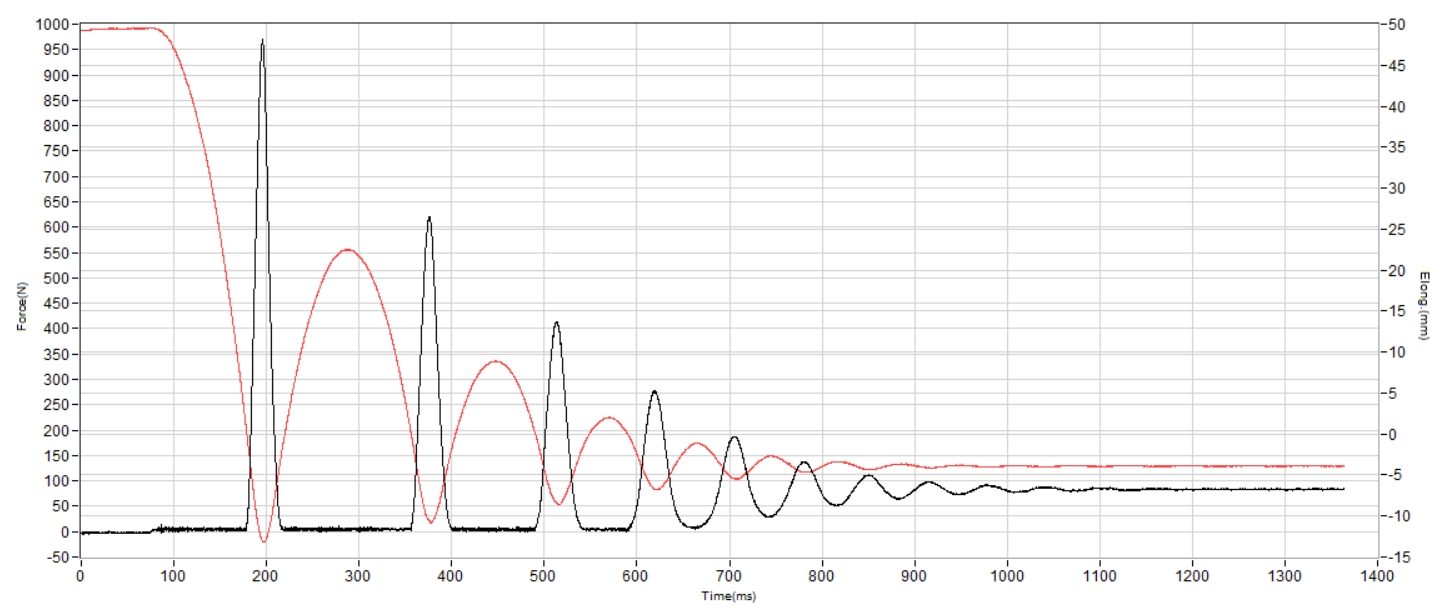
| Newport H2 | 103 SA |
| Average | 110 SA |
Energy return
The sandal's energy return of 52.9% proved to be on par with the category average. This implies that its sole is decently responsive, offering a fairly smooth and lively walking experience.
| Newport H2 | 52.9% |
| Average | 55.3% |
Size and fit
Size
KEEN Newport H2 fits slightly small (2259 votes).
Flexibility / Stiffness
Of course, you cannot expect the same level of flexibility from this sturdy sandal when compared to the more minimal Teva Original Universal.
Our shoe flexing tester showed that the Newport H2 required nearly 40% more force to bend by 30 degrees compared to the category average! At 14.8N, it is by far the stiffest sandal in our lab.
But on the bright side, you will appreciate this rigidity if you expect a more shoe-like support in a hiking sandal. Because it is basically a hiking shoe with an open upper.
| Newport H2 | 14.8N |
| Average | 9.2N |
Who should buy the KEEN Newport H2
With the navigational freedom of hiking sandals and protectiveness mostly seen in trail shoes, the Newport H2 is a compelling product as far as versatility is concerned. It is a solid option if:
- you're someone who likes boulder-hopping around streams
- you want a sandal with that's cushioned like a shoe
- you're after an amphibious sandal that doesn't get smelly

Who should NOT buy it
If you want something with protection at the heel as well, check out the Hoka Hopara.
Also, we vouch for the Chaco Z/Cloud if you're looking for a more open hiking sandal.
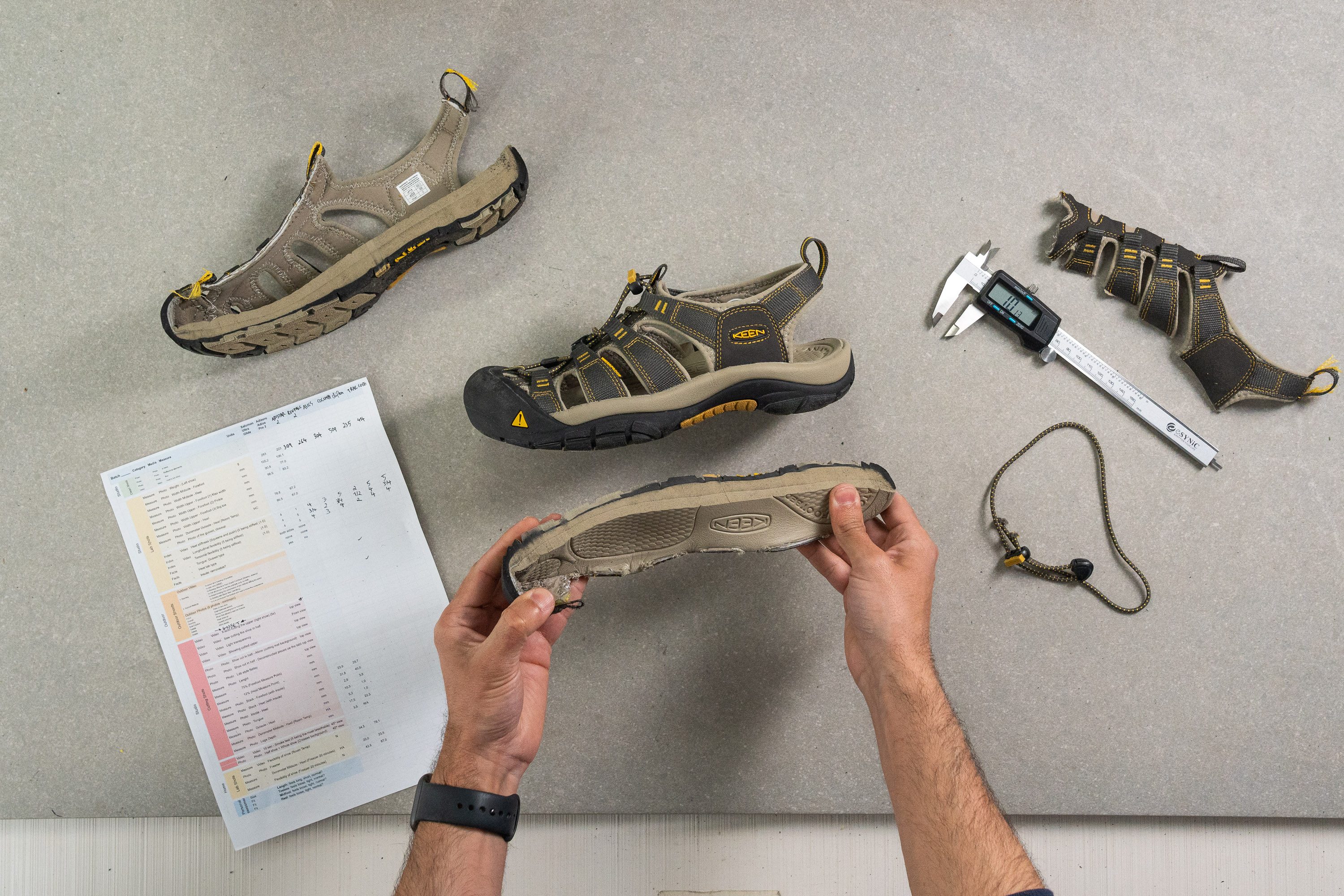
Comfy from day one and for many miles
We measured its heel thickness at 29.4 mm (6.7 mm thicker than average). For reference, the average heel height of hiking sandals is 22.7 mm, and of hiking shoes - 33 mm.

Not only is the cushioning thick, but it is also heavenly plush. The midsole layer which comes in contact with the foot is made of softer foam. Based on our durometer measurements, it is 21% softer than the bottom foam and 35% softer than cushioning foams in sandals on average.
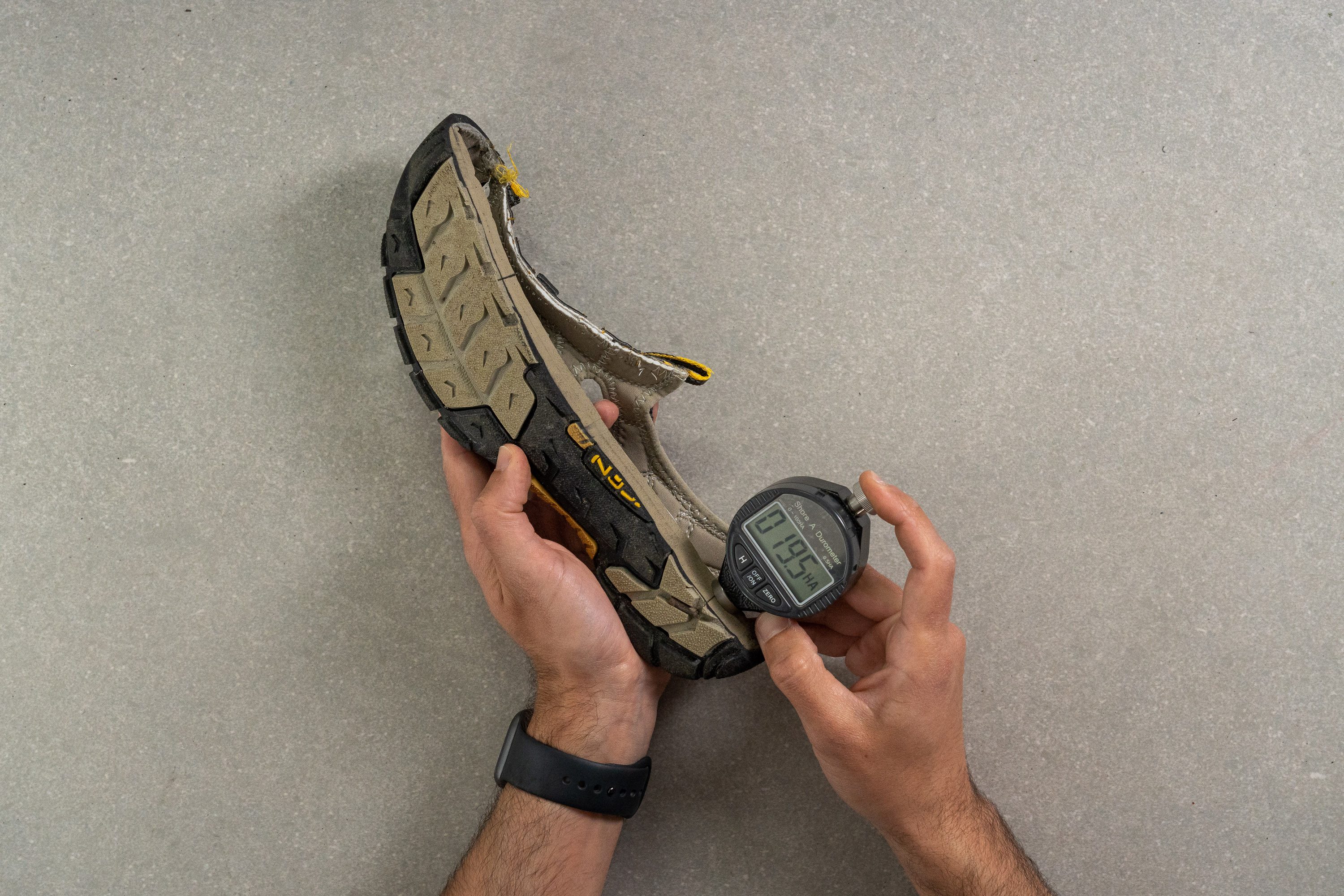
The bottom cushioning layer, which comes in contact with the ground, is consequently firmer, to create a stable and protective platform. And yet, it also turns out to be softer than average (by 12%).

This is the kind of sandal that could easily replace a hiking shoe for a long day of hiking and traveling.
No place for stink
We also discovered that this sandal performs well against foot odor. Despite being burlier than other sandals, the Newport H2 kept our feet very well aerated.
Won't let you slip
We are impressed with the sandal's high level of traction, whether on wet surfaces or dry terrain.
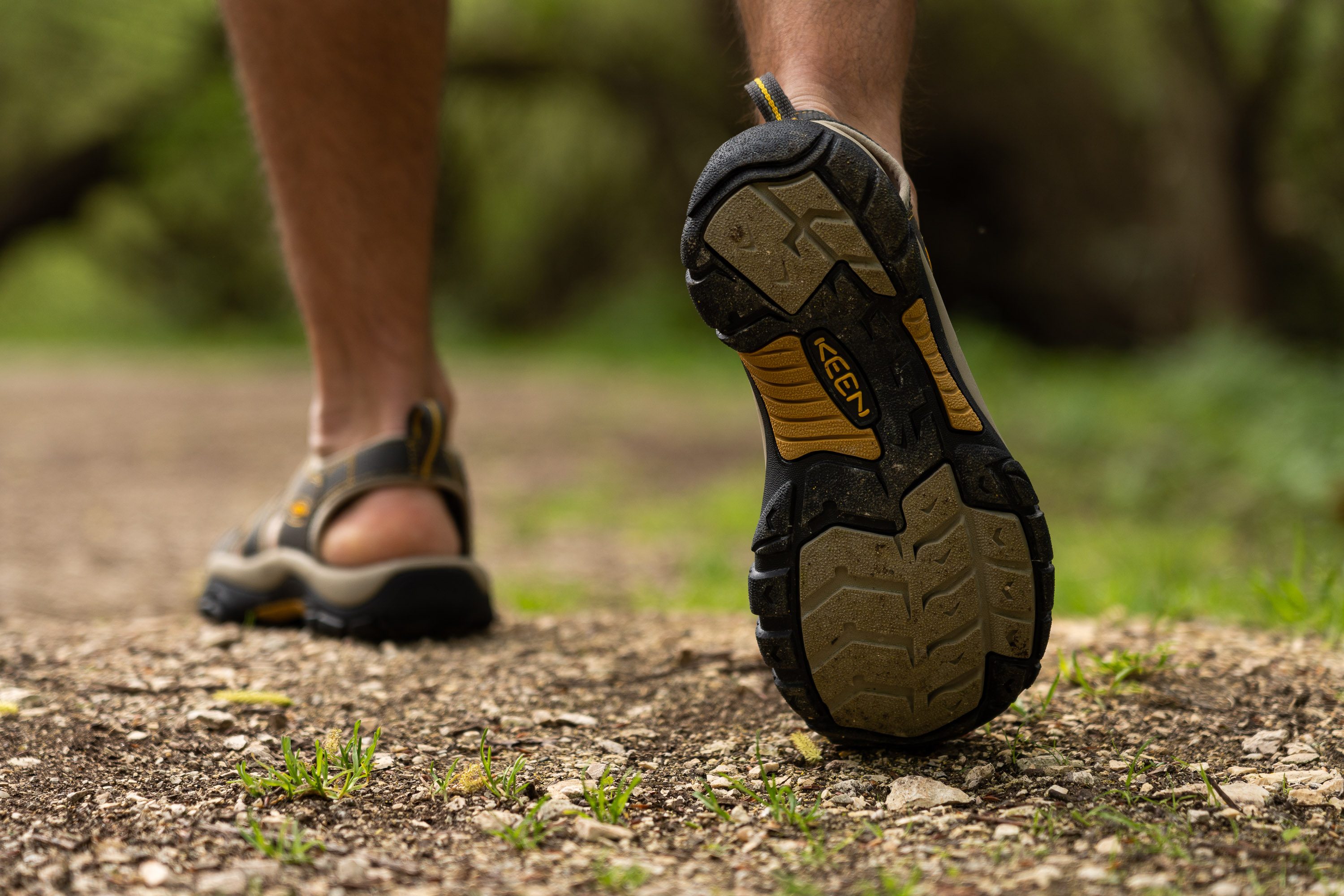
We noticed that the razor-siped sole provides insane traction.
We must say, 4.1 mm is a serious lug depth for a hiking sandal! This puts the Newport H2 in a row with hiking shoes (average lug depth: 4.3 mm)
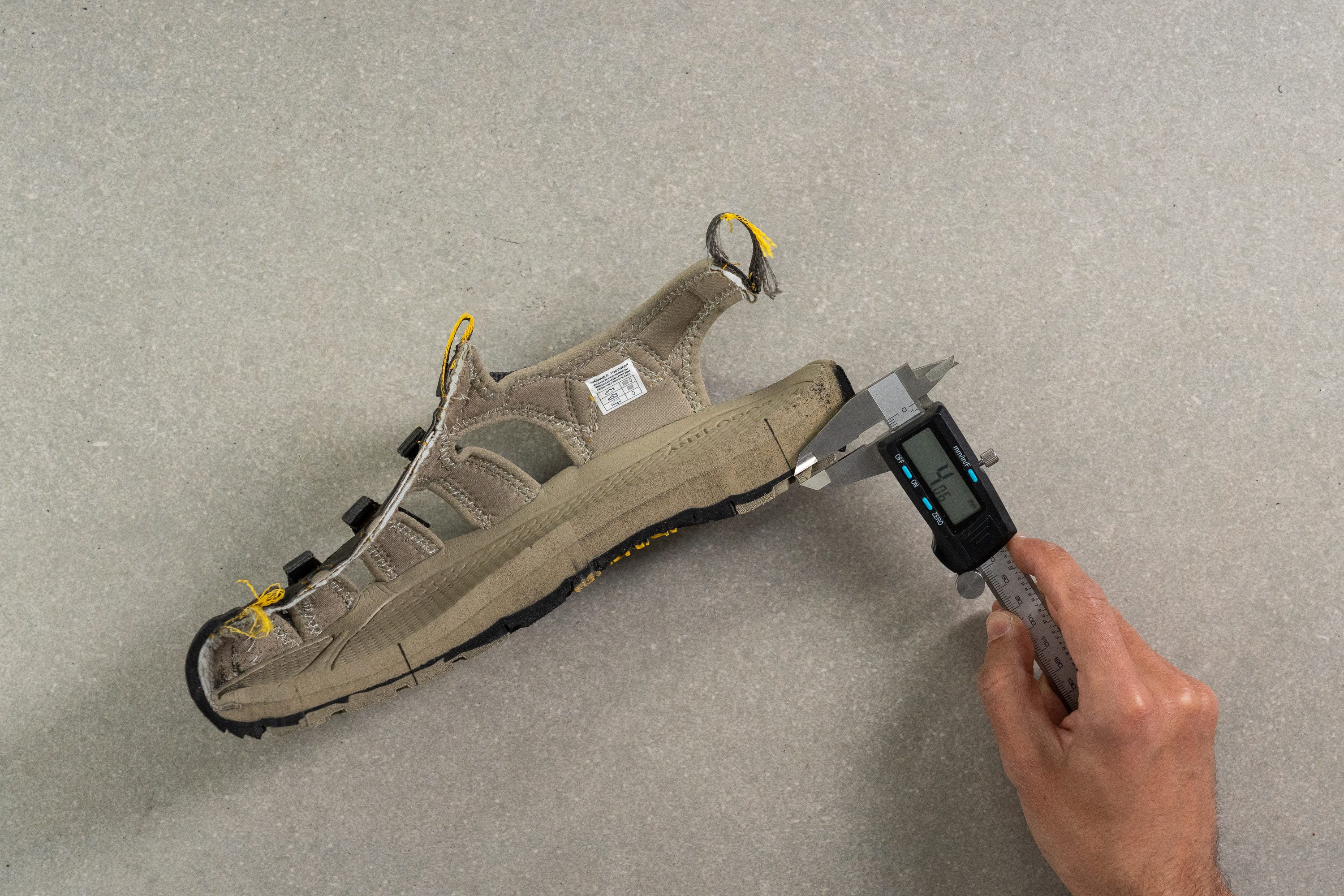
Surefooted steps in the KEEN Newport H2
The sandal also provided us with great stability and arch support on uneven terrain.
The shockingly wide platform of this KEEN sandal plays a key part in making it feel so stable. Using a pair of calipers, we measured the widest parts of its sole in both the forefoot and the heel.
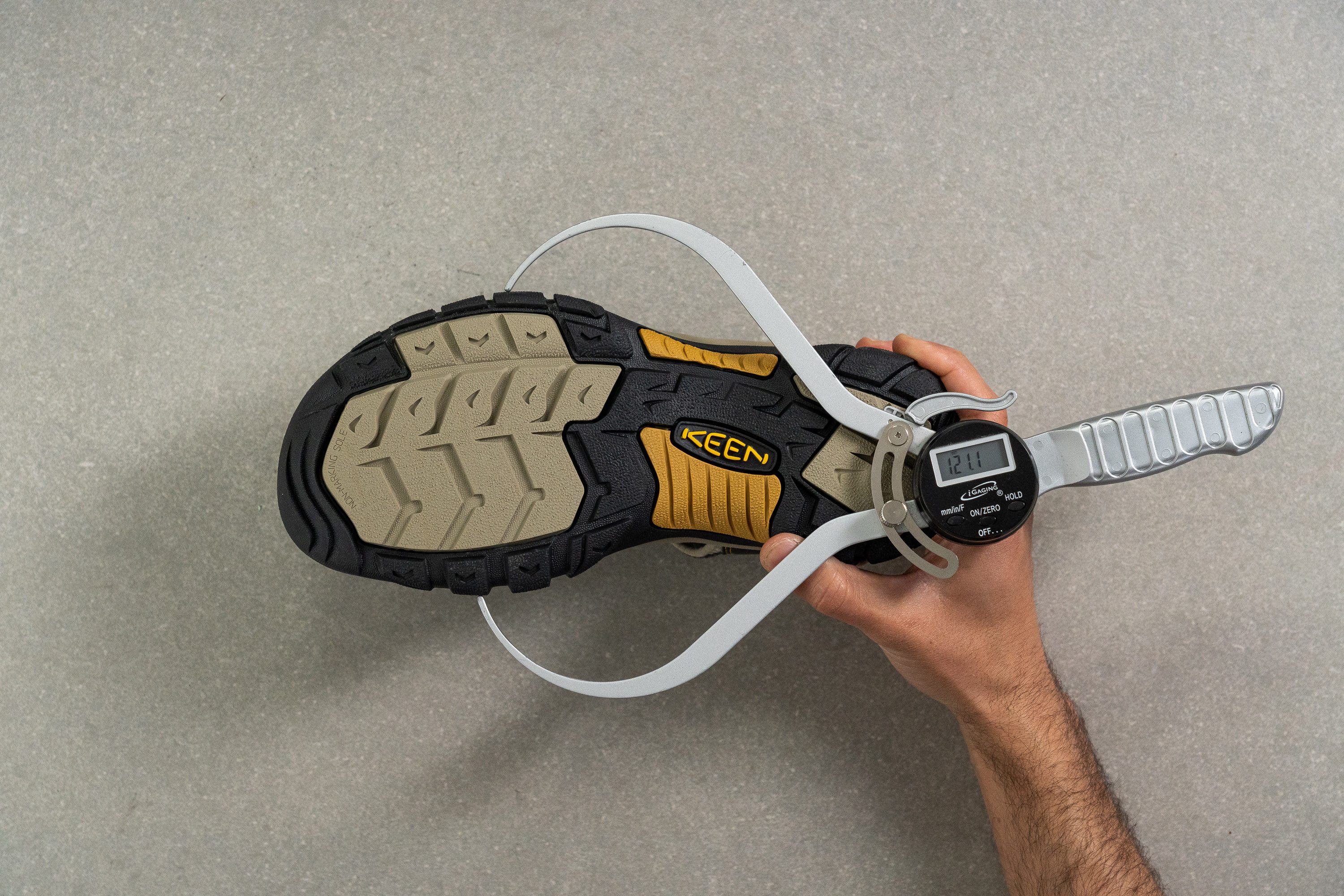
The Newport ended up even wider than some of the winter hiking boots! It is 121.1 mm wide in the forefoot and 88.8 mm wide in the heel.
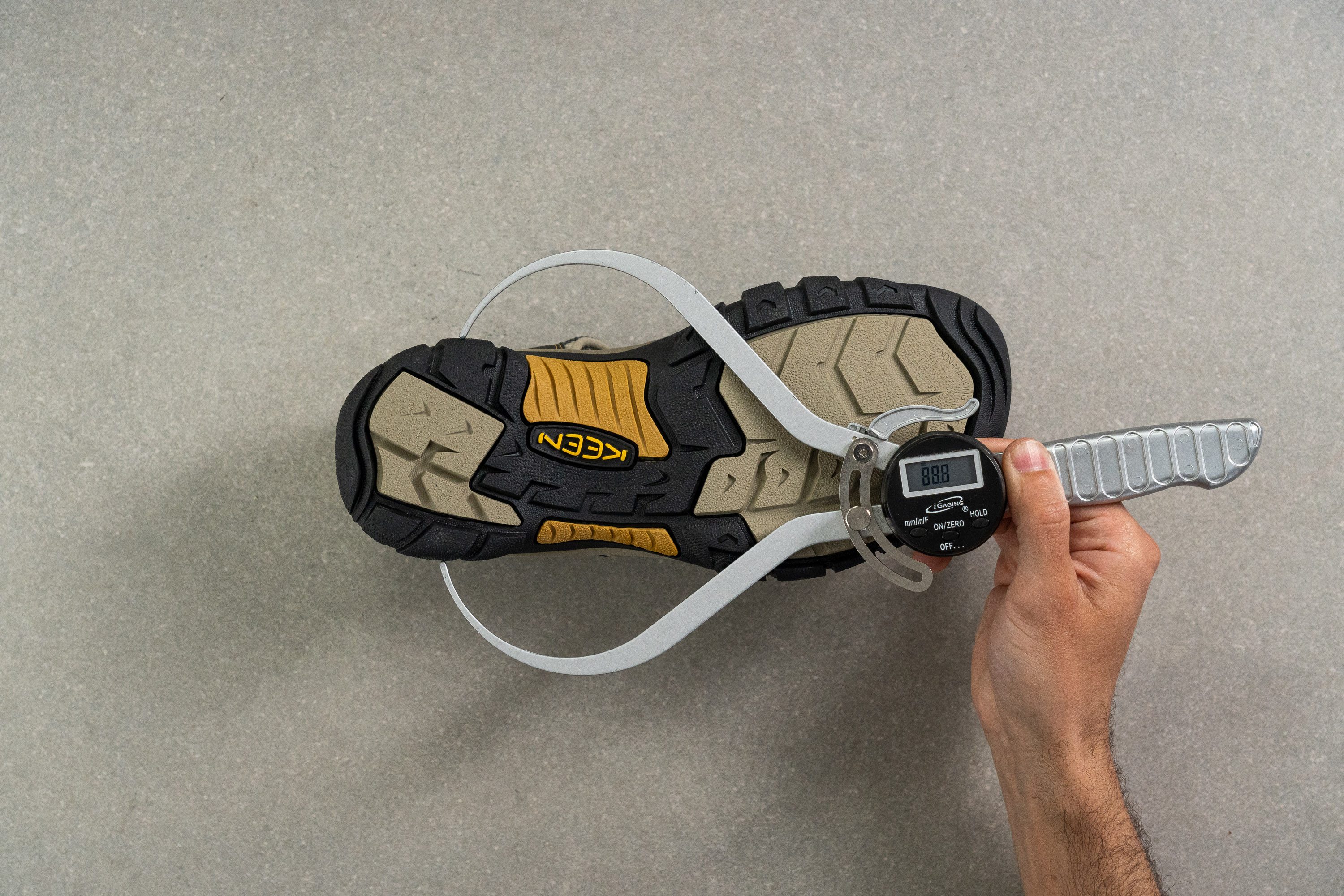
In our roster, it is only second to the insulated Columbia Bugaboot III (124.6 mm and 97.5 mm respectively).
Weight is the price to pay
Unfortunately, having such an abundance of cushioning and support has to be compensated for. In the case of KEEN Newport H2, it comes in the weight department.
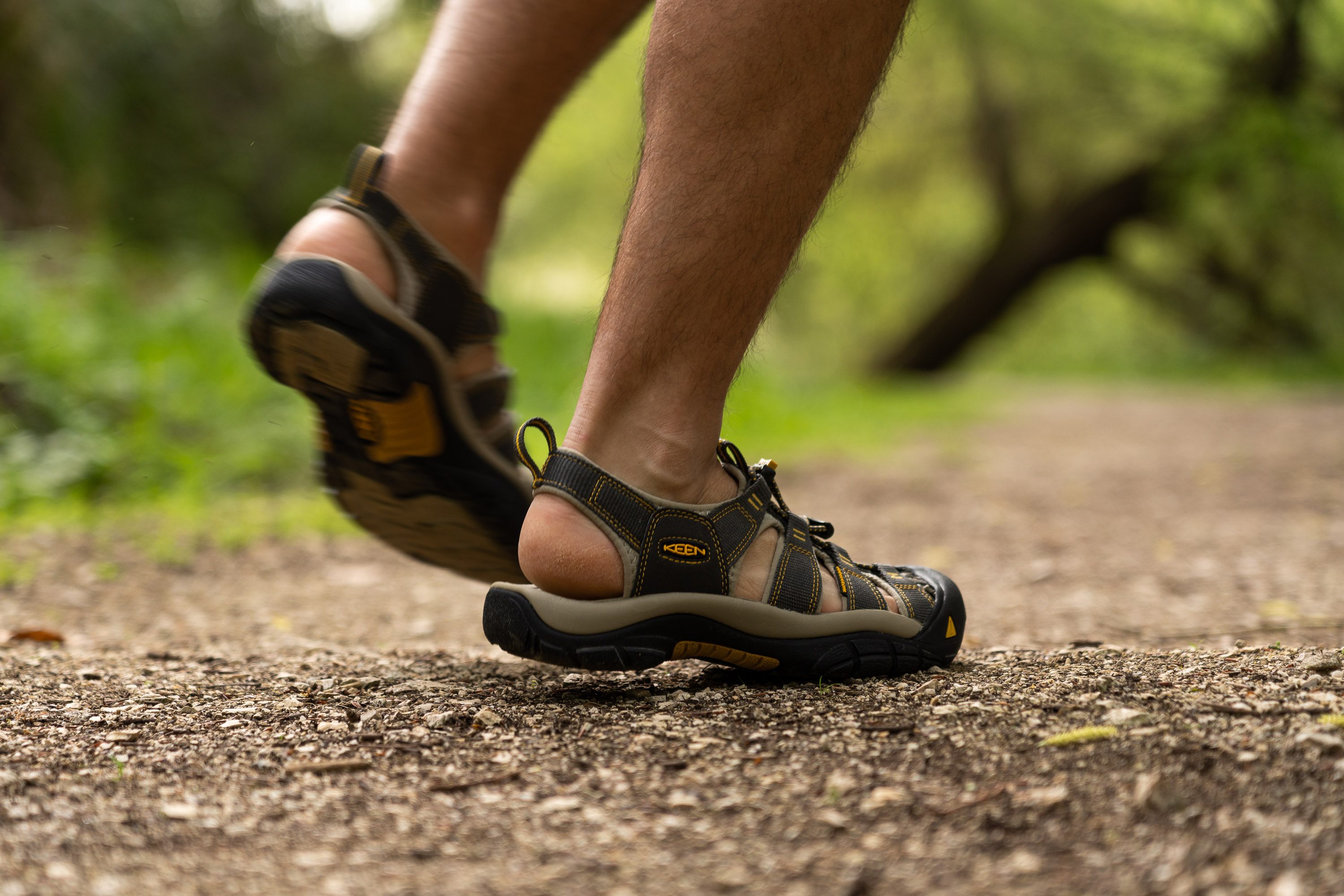
Tipping the scales at 13.4 oz (381g) in a men's US 9, it is among the heavier hiking sandals on the market (11.1 oz/314g is the average).
Once debris get inside, you have to take it off
We found that removing dirt and other foreign elements from the sandal without taking it off is a real nuisance.
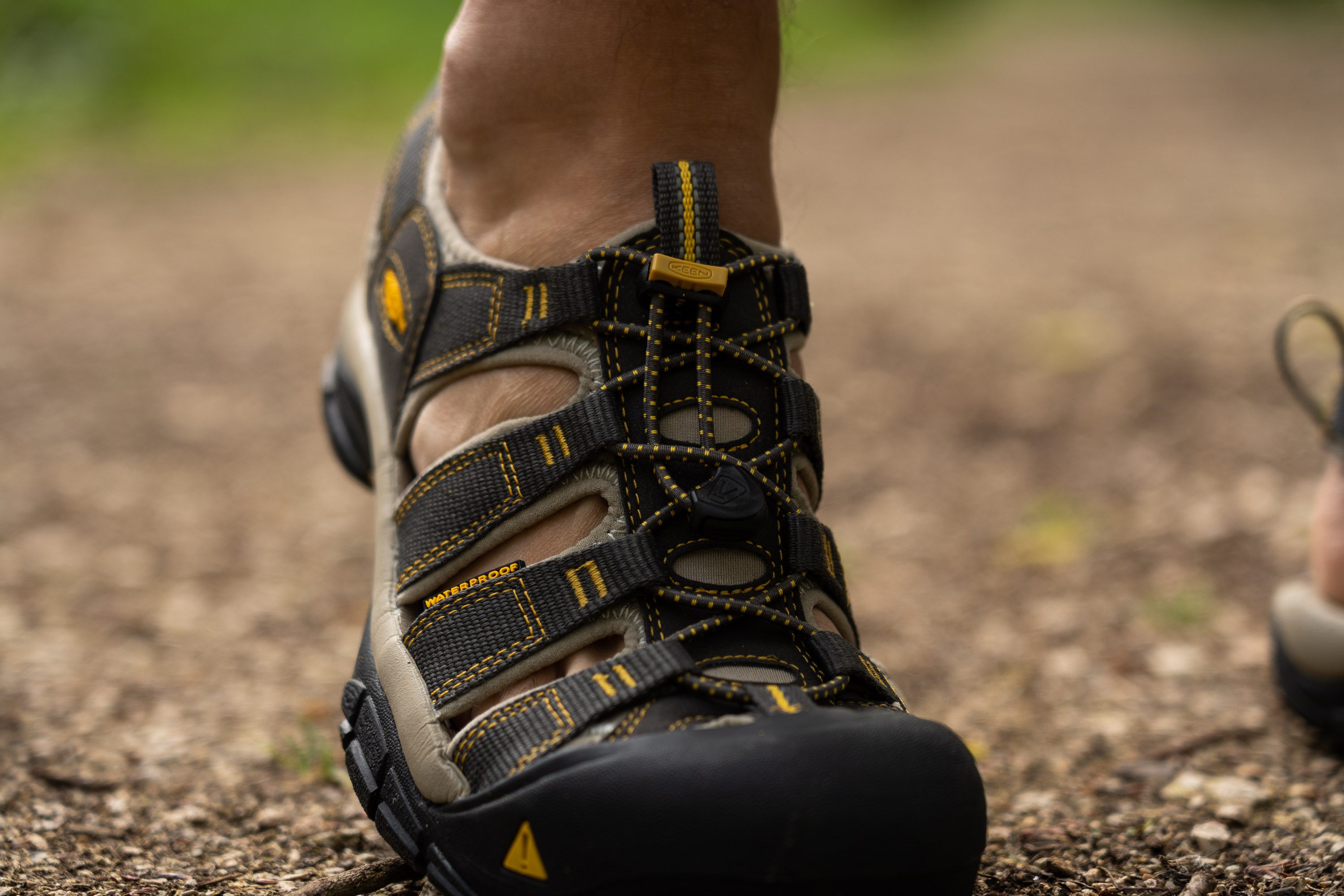
Good thing it uses a bungee lacing system which makes it quick and effortless to get the sandal on and off.
KEEN Newport H2 vs. Newport
The Newport H2 uses the same silhouette as the KEEN Newport (officially launched at a Fall 2003 trade exhibition). The main difference between the two models lies in the upper. The H2 version has polyester webbing confines, while the base model has a leather shell. The Newport is more expensive than the synthetic H2 by roughly $10.
Both models can perform in wet conditions. That said, KEEN sees the H2 version as the better choice since its synthetic upper is more hydrophobic (it flushes out moisture more effectively).


























